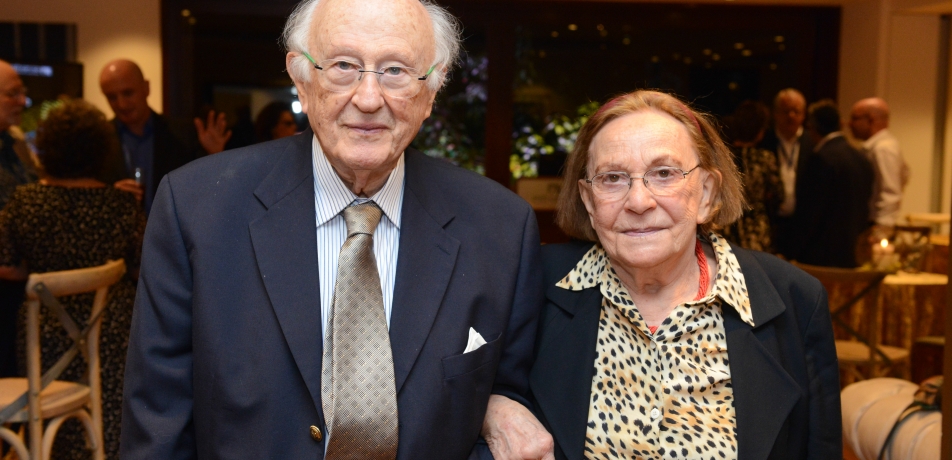Luis and Miriam Stillmann
From Europe to Mexico, and always Israel
People behind the science

Luis and Miriam (Buba) Stillmann of Mexico City have been close friends of the Weizmann Institute for more than three decades.
But, says Luis, it was the horrors of the Holocaust, which he survived, that gave him great affinity for Israel and his long-lost dream of being a medical doctor which drew him to the Weizmann Institute of Science.
“I am a Diaspora Jew. Just to be here in Israel and see an outstanding scientific institution is a dream that I thought I’d never see in my life. It is a major source of pride and joy for me,” said Luis.
As a boy in Hungary, Luis dreamed of becoming a medical doctor, but as a Jew in that country in the 1930s, it was impossible to receive acceptance to medical school. So he got a law degree. He survived the Holocaust in Mauthausen concentration camp, and was later employed by the United Nations Relief and Rehabilitation Administration in Germany after the war. He moved to Mexico in 1947, and married Buba Weisz Sajovits - a Romanian Holocaust survivor - a year later. Buba’s parents perished in Auschwitz.
In Mexico, he worked in the pharmaceutical industry and held leading positions in the field. He co-founded the Mexican Association of Friends of the Weizmann Institute of Science in 1983. (The Mexican Association is today part of the Latin American Association of Friends of the Weizmann Institute). “It was the Weizmann Institute that brought me back to my passion - medicine and science,” he says. He is a Life Member of the Institute’s International Board, and has been a member since 1985. Throughout the years, he has helped the Institute develop a network of friends and supporters in Mexico. Luis received an honorary doctorate from the Institute in 2013.
The tragedy of the Holocaust and her survival tale has also played a dominant role in Buba’s life. In her 2013 book, A-11147: Tattooed in My Memory, she depicts her experience in the concentration camps of Auschwitz, Unterluss, and Bergen-Belsen. She does so through paintings she began creating some 20 years ago, which gave “form and shape to the pain” of her memories, says her daughter Patsy Stillmann Weiss. In one of her most vivid memories, Buba describes a scene from her arrival at Auschwitz when her father ran after her and her sister to hand them their high school diplomas, in the hopes that they would be able to present them to the Nazis and thereby save themselves from hard physical labor. That was the last time Buba saw her father.
The final painting of the book is the “most memorable to me,” said Buba. It depicts her and her sister, Itzu, weakened and sad, holding hands at Auschwitz.
Ultimately, writes Patsy in the introduction, the book is a “palpable testimony of one life. As such, it is also a reflection of millions more.” In addition to Patsy, Buba and Luis have a second daughter, four grandchildren and five great-grandchildren.